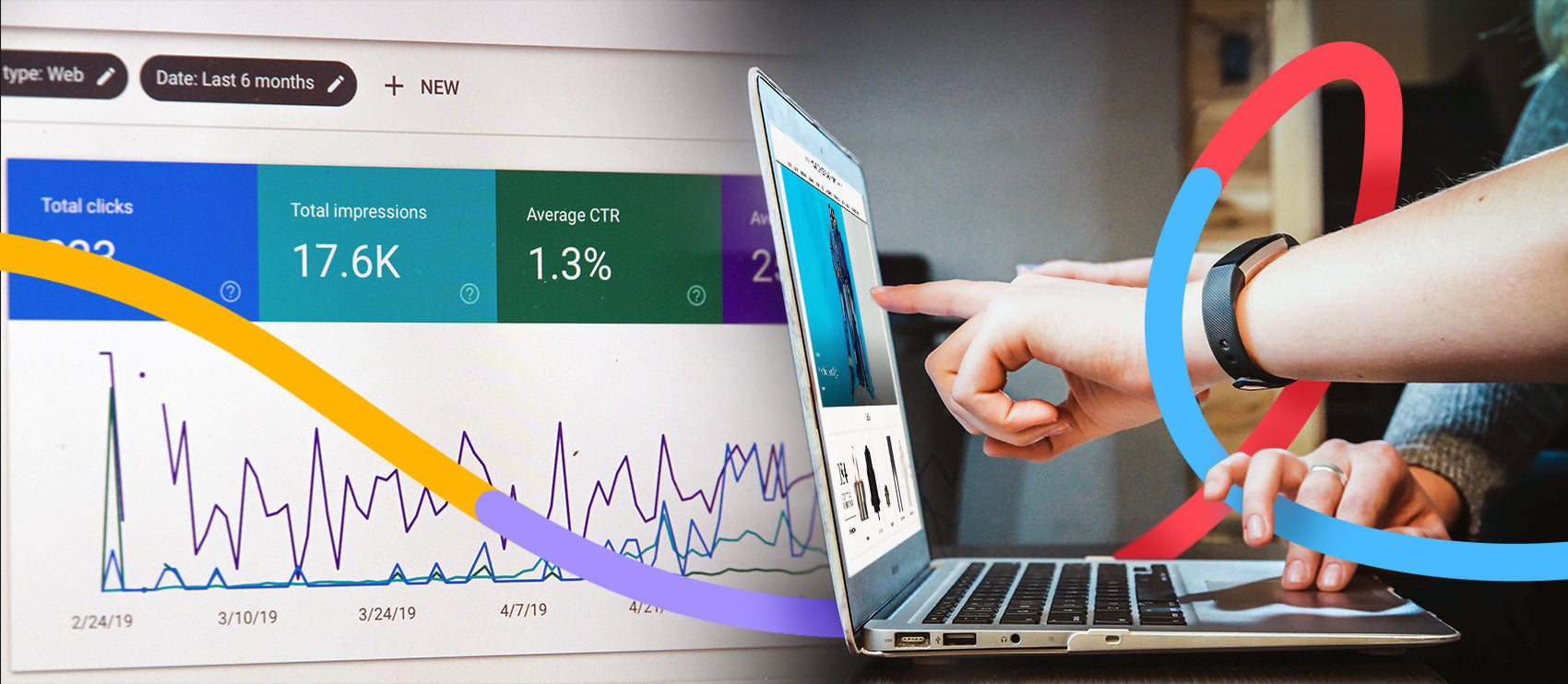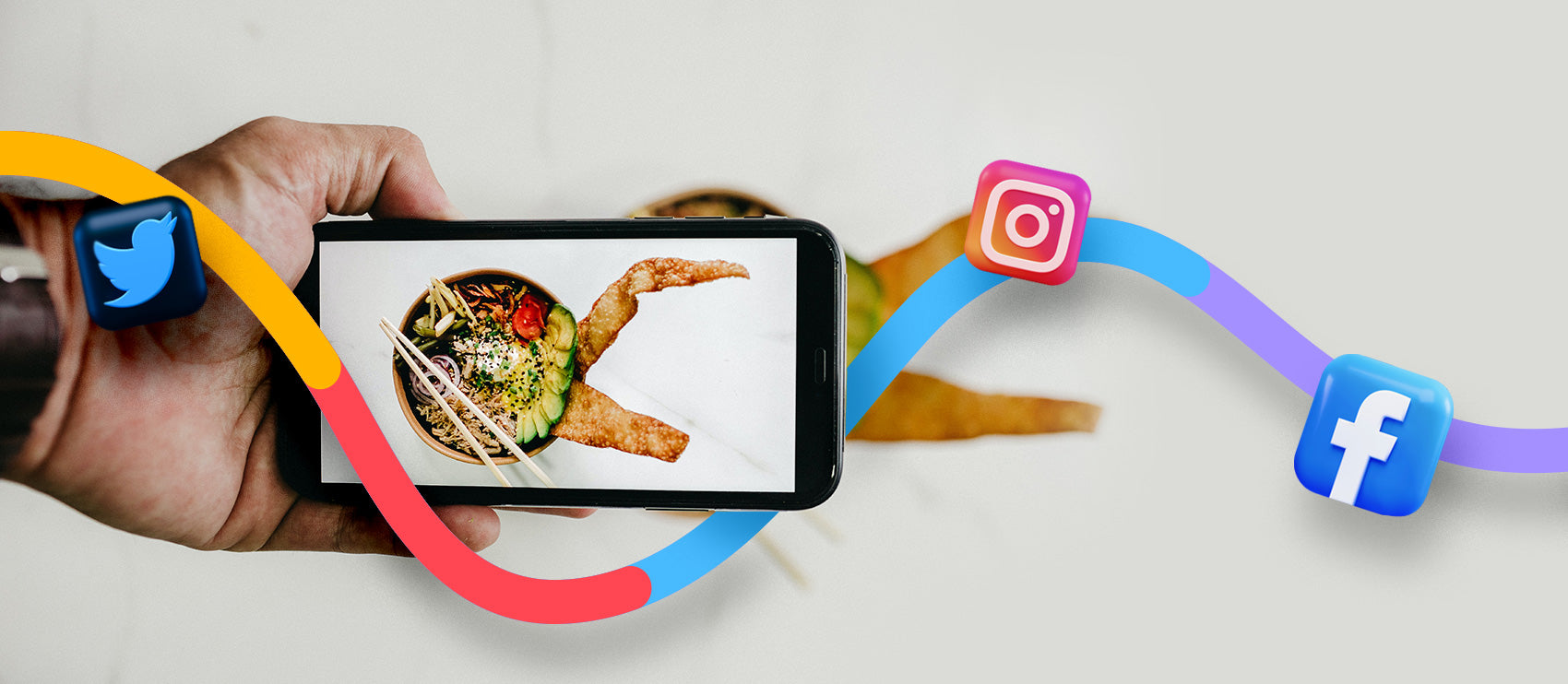If you want to be a product photographer with a streamlined client process, successful photo sessions, and a growing network of customers, you need to have systems in place. Before booking product shoots, create a plan for your business. Not only will this keep you organized, but it will also allow you to track and measure your growth over time.
If you’re a photographer, here are nine things you should do to set yourself up for success when starting a product photography business.
1. Determine your product photography style
When people shop online and look through ads, a huge determining factor as to whether or not they buy something is how the product makes them feel and if they can envision themselves using it in their own lives when they look at the photos.
Within product photography, there are a number of styles you can use to differentiate yourself and attract specific types of clients.
In-studio with a white backdrop
Even if you only have a white background, you can produce lots of clean product-only images. The best part of using a white backdrop is it allows you to highlight a product's features with the least amount of distractions.

This is why almost 9 in 10 fashion and apparel brands use product shots with a plain white background. For example, think about how brands create product catalogs online with product-only images to highlight the features. By eliminating visual obstacles, you can emphasize a product's characteristics.
When taking product images using a white backdrop, the focus is primarily on the features of the product, rather than the benefits.

Source: The Body Shop
Beauty and skincare brands mostly use white backgrounds for all their products. This puts an emphasis on the product so customers can see what they’re getting and know exactly what to expect.
Lifestyle product photography
If you think you work better showcasing products in context, consider practicing lifestyle product photography. This style is widely used for brand campaigns to speak directly to a target audience.
For lifestyle product photography, you’re crafting imagery to demonstrate how the products are put to use in real life. Contextual product images tell a story, demonstrate how to wear or use products, and evoke aspiration. If consumers see how a product benefits them, they’re more inclined to buy.

Source: Pura Vida Bracelets
Although the individual product listings on the Pura Vida Bracelets website are on white background, there are lots of lifestyle shots throughout their website. Lifestyle photography is important for this brand because it gives customers context in terms of fit and sizing of their jewelry. And it helps reinforce the lifestyle (and Costa Rican motto) the brand is synonymous with.
Product photography with models
Working with models for a brand shoot can also be beneficial. With an actual person modeling a product, customers can judge a product's size and scale.
While most professional and agency models know how to pose, it will be a problem if you can't direct subjects. That’s because as a photographer, it’s your job to understand what’s needed to accomplish the shot and relay that to your models. Another problem you might encounter is logistics, especially since you have to determine if you need a certain body size, skin color, hair and makeup style, and wardrobe.
Because of the importance of social distancing during COVID-19, photographers now have to make concessions to allow for health and safety precautions in-studio. These can be as simple as having hand-washing stations for everyone to easily access, ensuring those not in the photos wear masks at all times, and disinfecting products before and after each person touches them.
2. How to determine where to shoot your product photos
The location depends on the type of photoshoot. If you're shooting furniture or a group of models, you'll likely need a bigger studio space. Meanwhile, a home setup should suffice if you're photographing small items like jewelry or food.
Renting a studio space vs. setting up space in your home
When it comes to the location, there are some pros and cons to studio spaces versus shooting in your house:
Pros to renting a studio space
|
Cons to renting a studio space
|
Pros to shooting at home
|
Cons to shooting at home
|
After deciding where to shoot, you still have to set up the sace. Make sure there’s room for people, products, and equipment. Depending on the mood you’re going for, the space should feel warm and inviting.
3. Do I need a contract for my photography business?
A contract is a powerful document that details your responsibility and limitations for the job so it’s important to plan ahead and have a contract ready.
If you and the client understand both parties' obligations, you won't experience a horror story like losing money because of copyright infringement. While there are free photography contracts you can find online, it’s a good idea to hire a lawyer to look over your contract before sending it to clients.
4. What should I charge for product photography?
Questions around product photography pricing is one of the biggest variables for new business owners and photographers. Prices range depending on location, experience, what items you’re photographing as well as how many photographs there are and how much editing it required for each photo.
Know your cost of doing business
The most important thing to remember is the cost of goods sold (COGS). Knowing your COGS helps you understand how much money it costs to create and sell each product vs. how much money you’re making with each product sale. If your COGS are negative, then you’re losing money.
When calculating your COGS, everything you need to run your business: equipment, props, transportation, software, internet, and your time.
In the simplest of terms, you need to figure out how much it costs to run your business — that will be your break even point or your COGS.
Should you charge per shoot or per image?
Rates may depend on your preferences, as some photographers opt for a day or hourly rate rather than pricing individual photos. Regardless, both should consider:
- Scope: How will the clients use the images? Is it for local print media or global ad campaigns?
- License: How many times can the client use the pictures? Is it for one-time use or do they get a lifetime license?
- Quantity: How many products do you need to photograph?
- Setup: Do you need to buy props or hire models?
- Location: Indoor or outdoor shoot? Rent or DIY home photography studio?
According to Glassdoor.com, in-house product photographers can expect to earn between US$30,000-$80,000 per year. However, those rates can vary when you’re freelancing and charging per photo or per hour.
You can always negotiate your rates to ensure both you and your potential client are getting the best deal out of it. There are a few things to consider before you modify your price list or offer a discount.
Should you charge extra if they want additional retouching on certain product images?
This is a case-by-case basis. If the contract states the initial payment includes additional retouching, then you can't charge for extra editing work.
When there's no such agreement, you may charge photo editing rates by project or image. Likewise, you can impose additional fees depending on the volume of images and the complexity of the task.
5. What equipment do you need to become a product photographer?
When choosing photography equipment, think about whether it can help you produce the desired output. Before you overspend and become a mini hoarder when it comes to equipment, think about what you’ll actually be photographing.
Let’s make sure you don’t buy everything just because you want to, as tempting as it may be. Because you may not use (or need) everything if it’s not suitable for the product shoots you’re doing. And if you do have enough cash flow to buy a bunch of gear, be frugal at first! Having the most expensive gear doesn’t mean you’ll be a better photographer.
To get start, focus on the basics:
- Two camera bodies
- Two to three lenses
- Two to three lights and modifiers
- Light stand(s)
- White backdrop
- Smartphone
Two camera bodies
Contrary to what you might think, you don't actually need an excessive camera system —especially if you're just starting. While a high-end camera will definitely make certain functions easier, you don’t need all the bells and whistles right away. For starters, choose the best camera can be straightforward, like a Nikon D750. It’s really all about the lens, anyway.

Two to three lenses
Your best investment (and probably biggest) will be to get lenses with varying focal lengths.
- Prime: A nifty-fifty lens (50mm) will make your subjects appear normal in size. This is pretty close to what the human eye sees and is a must-have lens for product shoots.
- Macro: This is ideal for zooming in on intricate details and features. If you’re shooting something tiny and detailed like jewelry, you’ll definitely want a macro lens.
- Tilt-shift: This lens allows you to adjust the perspective without moving the camera or distorting the image. It’s great for capturing different subjects without blurring either one.
Two to three lights and modifiers
To capture well-lit photos, you either need to use natural or artificial light. If you're shooting indoors, you might have little to no natural light source. In these cases, you’ll need other sources, like an external flash or strobe.
When you use artificial light, it’s also important to modify it so the light won't be too harsh and strong. A softbox, lightbox, and a reflector can aid in managing lighting, as well as bring consistency to your photographs.
Light stands
For stacking light modifiers and boom arms, you need something to support the weight. Light stands are a photographer’s best friend. It’s your trusty gear to support artificial light sources. When choosing a light stand, make sure it's lightweight and easy enough for you to carry with you to photoshoots if necessary.
White backdrop
White is an all-around acceptable background for photographing products and people. You can buy a white backdrop in various shapes and sizes to make your product photography consistent across the board. You can also play with the tone by adding a grayish hue or opting for off-white.
Smartphone
If you don't have a professional DSLR camera yet, a smartphone can be your best friend. Aside from built-in quality lenses, most smartphones now offer image stabilization and shooting modes. On the plus side, you can quickly edit product images with phone apps.
6. What a website can do for your new business
If you want to start a product photography business, you need a professional-looking photographer website that can serve as your portfolio and client communication tool.
Having a well-designed platform shows who you are as a photographer and how you create product photos. Once you create a website, you'll reap the following benefits:
- Build your brand: Make yourself shine against several product photographers. Show what clients can experience from working with you, and how you can turn their visions into quality product photos.
- Highlight your work: Develop a gallery, showcase your best works, and let clients see how versatile you can be, regardless of the products you photograph.
- Share prices: While you may not want to post your exact price list online, you can give clients a range through blog posts.
- Social media integration: Redirect viewers to your accounts on Facebook, Twitter, Instagram, Pinterest, and earn followers or likes.
- Get inquiries: Let potential clients send you requests for price quotations and bookings.
7. How to get photography clients
While your product photography skills are important to sustain a career as a product photographer, you’ll also need to learn about marketing your new business so you can attract clients.
Search engine optimization (SEO)
In a nutshell, use keywords or phrases in your website's content to make search engines, like Google, easily find your website.
For instance, if you use "product photographer in Ridgewood, New York," there's a higher chance New York locals will find you, especially those in Ridgewood. The goal is to use keywords that have a "buying intent," which means clients are looking to purchase something specific and turn a simple inquiry into sales.
When it comes to local SEO, it's essential to include correct and consistent information on your name or business name, address/location, and contact details. Create a Google My Business profile that pinpoints your location so that you have the opportunity to show up in the localized map pack for your area.
Social media
Social media is a powerful marketing tool for product photography businesses. While you can secure clients from Facebook, Instagram, Twitter, Pinterest, and YouTube, managing social media accounts requires planning and commitment.
- Use hashtags: With the right #hashtags, people can find you more easily. Hashtags categorize content for your audience, which enables people to find posts relevant to their interests.
- Interact with people: A great way to engage online is to talk to the people who are viewing your images and responding to their comments.
- Create relatable content: People like connections. They want to feel understood and build relationships. By showing behind-the-scenes photos and videos, people can see who you are as a person, giving them an idea of what it's like to work with you.
Networking
Networking is another effective way to start and grow your product photography business.
Find where your target market spends their time, such as photography seminars, photo walks or tours, and event fairs. That’s where you should be. You can look at sites like Eventbrite or Meetup to find photography events happening in your area.
If you prefer online networking or can’t attend something in person, join social platforms or community forums. Facebook groups are great for this.
If you prefer online networking or can’t attend something in-person, join social platforms or community forums. Facebook groups are great for this, and many group leaders will hold Facebook Live sessions to connect with their followers.
8. How to master photo editing techniques
Product photography doesn't end at taking pictures. Much of the work also covers the editing process. There are times when you'll need to do much more than just simply color correct the image in Lightroom.
When it comes to product photography, you’ll probably be spending a lot of time in Photoshop meticulously retouching, clone stamping, and choosing the right color space settings so that the image looks high quality for the client.
Aside from attending workshops, you can watch online tutorials or read articles on how to improve your photo editing skills. If you have no scheduled shoots, practice photographing things found around your house and then try various editing techniques.
While practicing helps you master photo editing softwares, it also improves your work efficiency. When you're starting, you may spend days culling and editing photos. Eventually, you can shorten editing hours and work on more images.
9. How to accept payments from clients
Even if you accept checks, do not let this be the only way a client can pay. In general, people are veering toward online payments for convenience and real-time transactions. Allowing clients to pay with a credit card makes it easier for them to pay, and quicker for you to get paid. With checks, you run the risk that the client does not have sufficient funds in their account, so when you go to deposit it, the check could bounce.
Make the payment process hassle-free for both you and the client. Use a reliable online payment channel, like PayPal, Venmo, Transferwise, or Stripe, to make the process look more professional and trustworthy.
Use an accounting software
Since you're managing a business, you need to keep track of your income and payables. Fortunately, several online accounting softwares can make financial management effortless.
For example, Wave is an accounting software that handles online invoicing, accounting, and payroll services. It accommodates several payment types, making it easier for your clients to send money.
However, you have to be patient and meticulous when setting up an online payment channel. In the case of Wave, developing a payment channel includes:
- Choosing currency.
- Providing clients the option to pay you through an invoice.
- Giving customers the option to save their credit card details for faster repeat transactions.
- Transfering of the payments to your bank account in two business days.
Why wait? Start your product photography business today
While there are several things you need to plan and do before starting a product photography business, all will be worth it once you have organized systems in place. Remember, these are all part of running a successful product photography business and providing excellent customer service.







